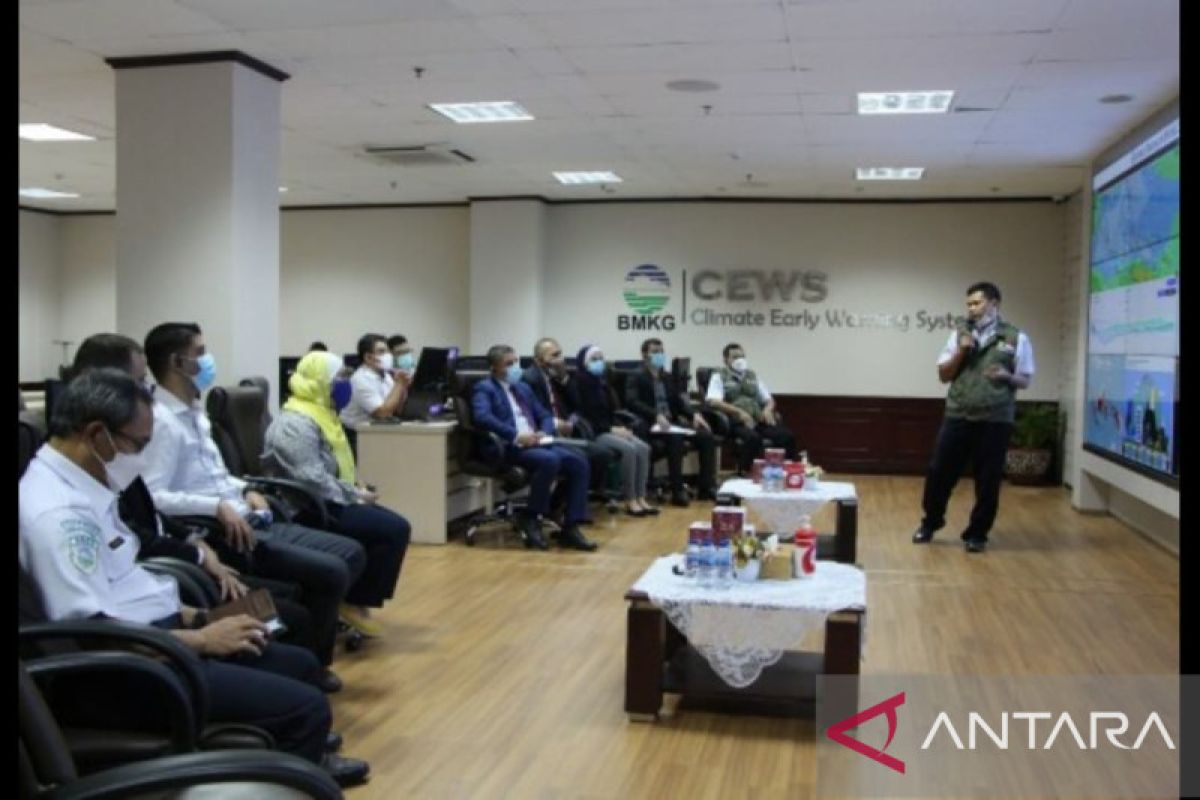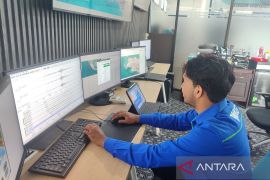Currently, Indonesia has inaRISK, which is a risk assessment portal that provides information on potential hazards, affected populations, loss, and damage, as well as monitors the risk mitigation indexes.Jakarta (ANTARA) - The Indonesian government shared its experience in implementing disaster risk mitigation and early warning systems with the Jordanian government delegation on a working visit to Jakarta and East Nusa Tenggara on June 20-24, 2022.
According to a statement received here on Wednesday, the Jordanian delegation visited the National Disaster Mitigation Agency (BNPB) as well as the Meteorology, Climatology, and Geophysics Agency (BMKG) in Jakarta.
In addition to sharing experiences, the visit aimed to explore collaborations in mitigating the risks of drought.
Hence, the delegation also headed to Kupang City, East Nusa Tenggara (NTT) Province, which often experienced drought. In addition, the region was hit by the Seroja tropical cyclone in April 2021.
Head of the Climate Change Information Center at BMKG Dodo Gunawan welcomed the arrival of the Jordanian delegates to learn about Indonesia's efforts to improve the early warning system.
“The BMKG has an important role (to play) in climate monitoring and providing information on the extreme climate phenomenon. Our task is to analyze and disseminate information regarding climate as well as issue an early warning to the stakeholders, so that the impact of disasters can be mitigated,” he remarked.
As part of the drought-handling efforts, his side also monitored the pattern of occurrence of days without rain and the intensity of rainfall in areas prone to the disaster.
In addition, the agency has issued a drought early warning, so the local governments will have made better preparations as a mitigatory measure in handling the disaster.
Director of Disaster Risk Mapping and Evaluation of BNPB, Udrekh, noted that the Pacific Ring of Fire -- which is the meeting point of the world's three tectonic plates -- makes Indonesia vulnerable to various disasters, including earthquakes, tsunamis, and volcanic eruptions.
The occurrence of several climate change-related disasters, such as floods, droughts, and rising sea levels, also increases in Indonesia.
“One of the important keys of mitigating the disaster risk is to conduct a study. Currently, Indonesia has inaRISK, which is a risk assessment portal that provides information on potential hazards, affected populations, loss, and damage, as well as monitors the risk mitigation indexes," Udrekh stated.
The information can support the works of other stakeholders to formulate and coordinate for supporting more effective attempts to mitigate the disaster risk, he remarked.
Ayman Shiply, the head of planning and risk assessment of the National Center for Security and Crisis Management (NCSCM) of Jordan, said that his side was able to obtain additional knowledge and promote the implementation of technology transfer through the working visit.
The visit was part of the South-South and Triangular Cooperation (SSTC) facilitated by the United Nations World Food Program (UN WFP) in Indonesia and Jordan, in collaboration with the governments of both countries.
WFP Representative for Indonesia Christa Räder lauded the commitment of the two countries to increase their capacity to mitigate the risks and impacts of disasters and climate change.
SSTC is a strategic platform for the governments of the two countries to learn from each other, especially regarding attempts to improve disaster preparedness to protect the community, especially the most vulnerable groups, she remarked.
Related news: Indonesian FM visits Jordan to bolster bilateral economic cooperation
Related news: Indonesian parliamentary delegation's visit to Jordan to forge ties
Translator: Arief Mujayatno, Uyu Liman
Editor: Rahmad Nasution
Copyright © ANTARA 2022












